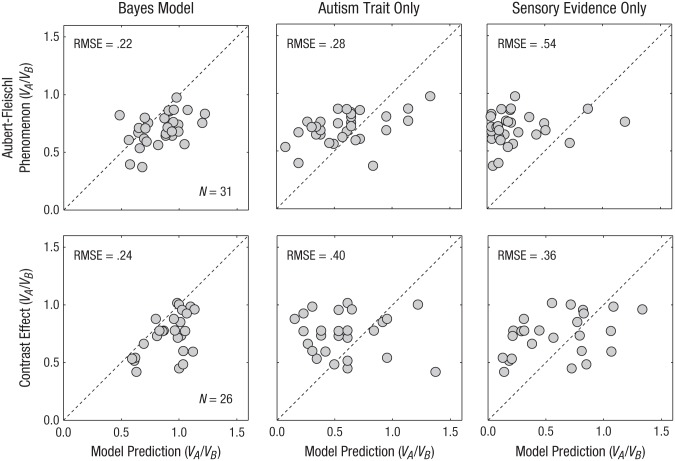Fig. 4.
Scatterplots showing the size of the Aubert-Fleischl phenomenon (Experiment 1; top row) and the size of the contrast effect (Experiment 2; bottom row) as a function of the predictions of the Bayesian model (left panels), the reduced model with autism traits only (center panels), and the reduced model with sensory evidence only (right panels). For the Aubert-Fleischl phenomenon, the ratio VA/VB refers to the point of subjective equality (PSE) divided by the speed of the standard stimulus. The PSE was defined as the speed at which participants indicated that the test stimulus was faster than the standard stimulus 50% of the time. A value lower than 1 therefore means that a moving stimulus appeared slower when pursued than when fixated. For the contrast effect, however, the ratio VA/VB refers to the speed of the standard, high-contrast stimulus divided by the PSE. A value lower than 1 therefore means that low-contrast stimuli appeared to be slower than high-contrast stimuli. The dashed diagonal lines indicate perfect prediction. RMSE = root-mean-square error.

